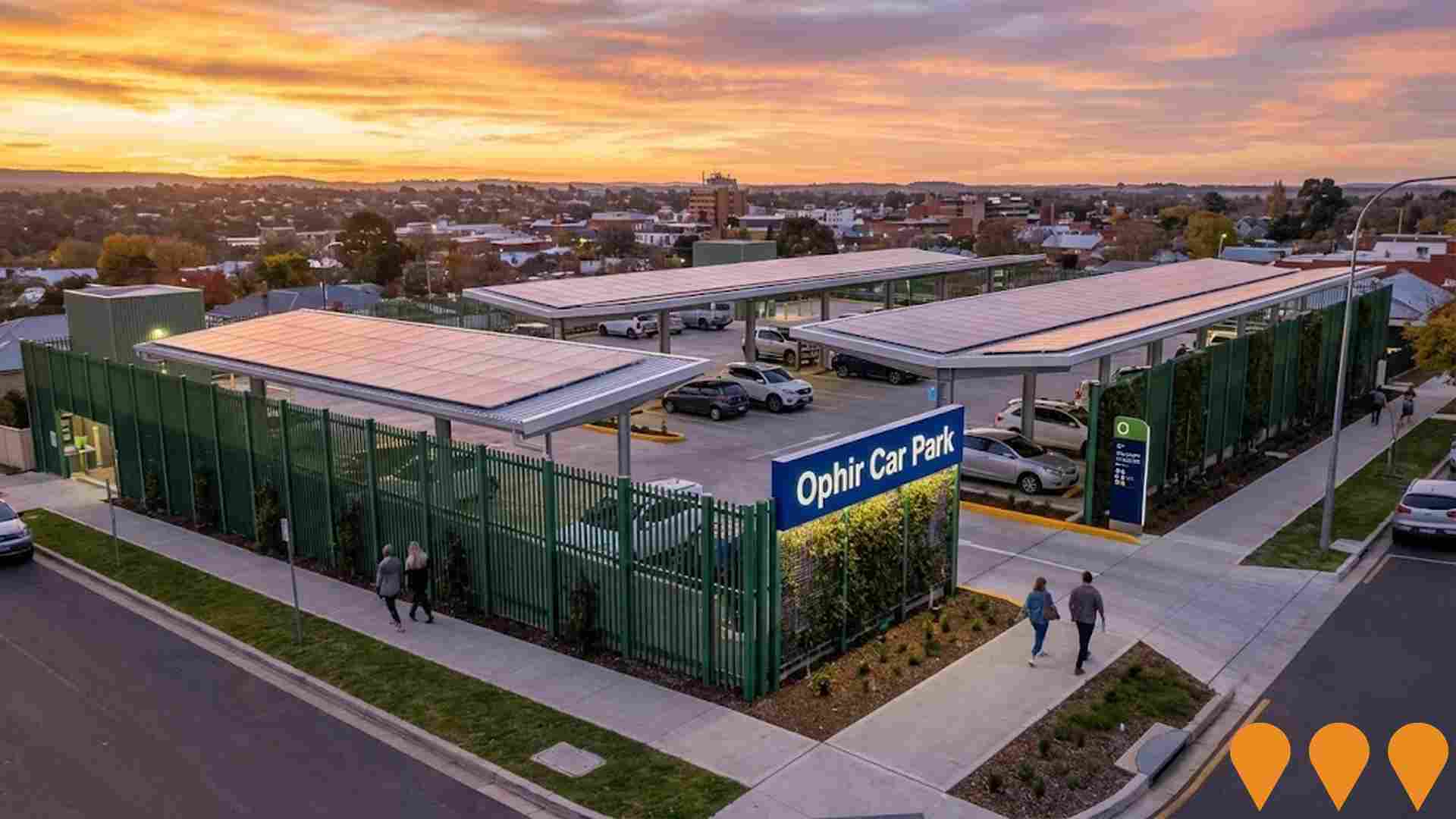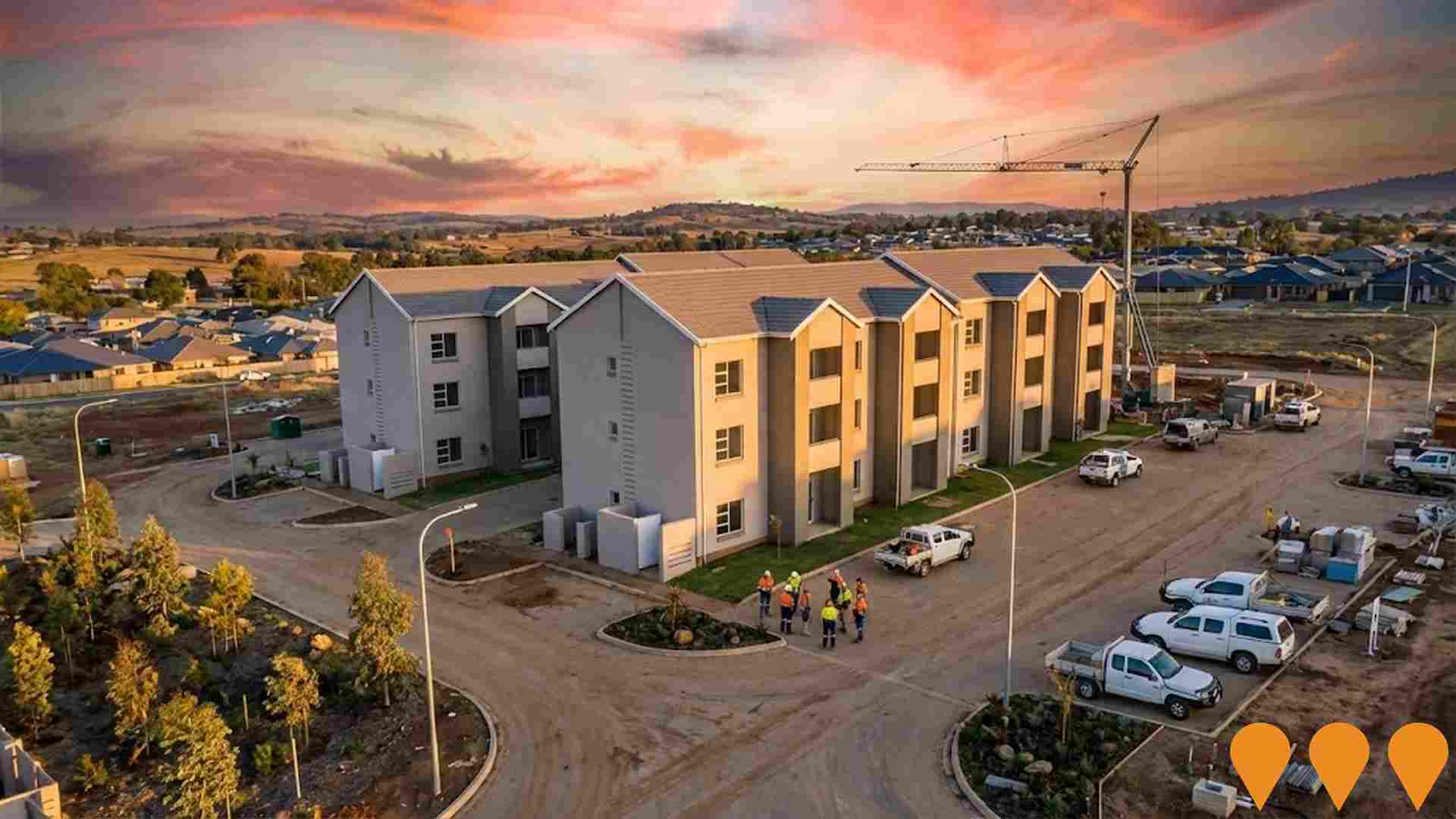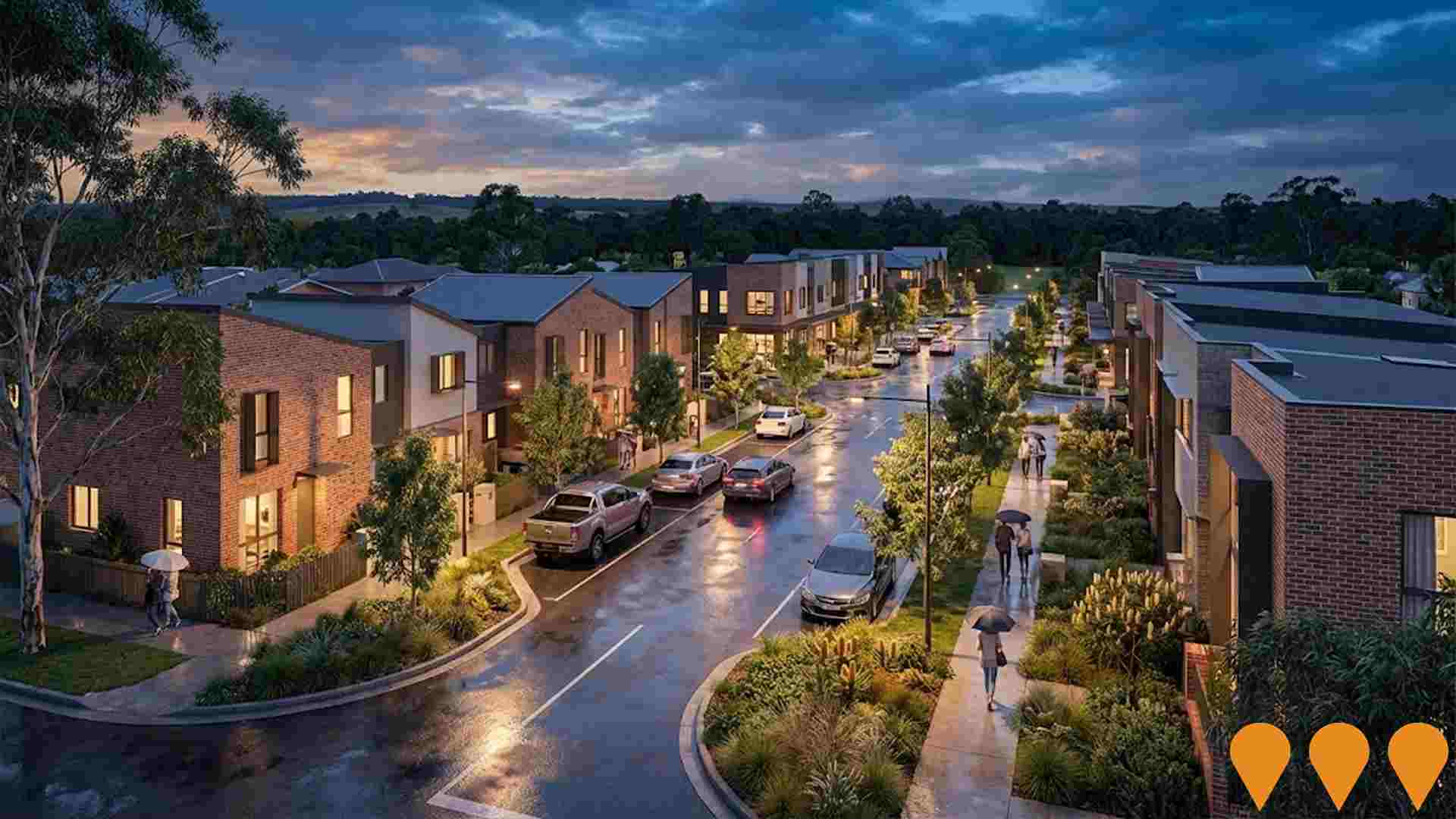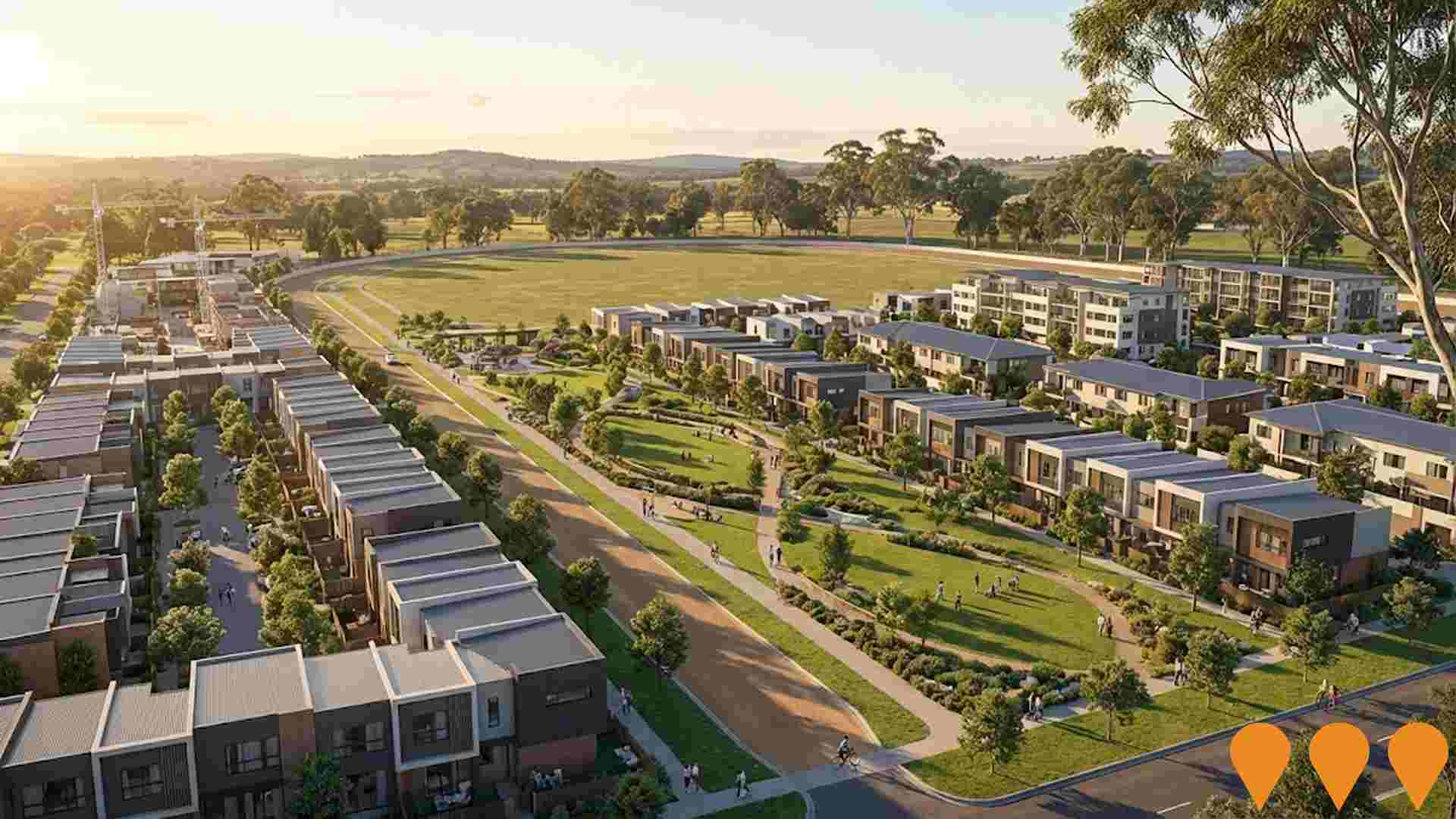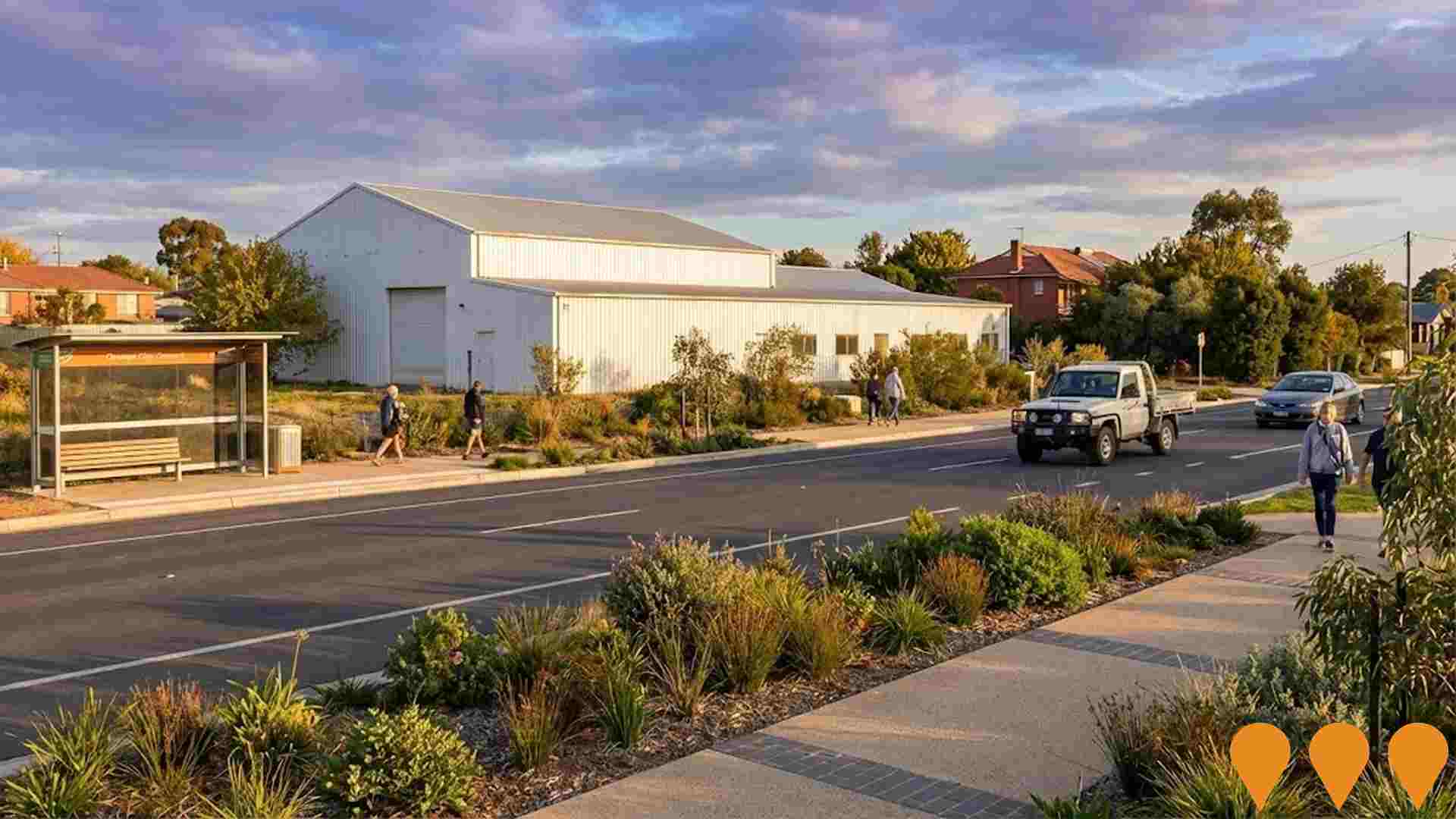Chart Color Schemes
est. as @ -- *
ABS ERP | -- people | --
2021 Census | -- people
Sales Activity
Curious about local property values? Filter the chart to assess the volume and appreciation (including resales) trends and regional comparisons, or scroll to the map below view this information at an individual property level.
Find a Recent Sale
Sales Detail
Population
Orange - North lies within the top quartile of areas nationally for population growth performance according to AreaSearch analysis of recent, and medium to long-term trends
Orange - North's population was approximately 23,965 as of November 2025. This figure represents an increase of 1,070 people (4.7%) since the 2021 Census, which recorded a population of 22,895. The growth is inferred from ABS estimated resident population data of 23,857 in June 2024 and an additional 465 validated new addresses since the Census date. This results in a population density ratio of 240 persons per square kilometer. Orange - North's population grew by 4.7% between the 2021 Census and November 2025, outperforming both its SA4 region (2.9%) and SA3 area. Natural growth contributed approximately 60.7% of overall population gains during recent periods.
AreaSearch uses ABS/Geoscience Australia projections for each SA2 area released in 2024 with a base year of 2022, and NSW State Government's SA2 level projections for areas not covered by this data, released in 2022 with a base year of 2021. Growth rates by age group from these aggregations are applied to all areas for years 2032 to 2041. By 2041, Orange - North is expected to increase by 6,128 persons based on the latest population numbers, marking a total increase of 25.1% over 17 years.
Frequently Asked Questions - Population
Development
AreaSearch assessment of residential development activity positions Orange - North among the top 25% of areas assessed nationwide
Orange North has experienced approximately 123 dwelling approvals annually. Between FY-21 and FY-25619 homes were approved, with an additional 25 approved in FY-26 to date. On average, 2.5 people have moved to the area per new home constructed over these five years, reflecting strong demand that supports property values.
New homes are being built at an average construction cost of $355,000. This year, $36.9 million in commercial approvals have been registered, indicating robust local business investment. Compared to the rest of NSW, Orange North shows moderately higher new home approvals, with 19.0% above the regional average per person over the five-year period.
The area maintains a traditional low-density character, with 92.0% standalone homes and 8.0% attached dwellings. At around 328 people per approval, Orange North reflects its low-density status. Future projections indicate Orange North will add approximately 6,019 residents by 2041. If development rates remain constant, housing supply may struggle to keep pace with population growth, potentially intensifying buyer competition and supporting price increases.
Frequently Asked Questions - Development
Infrastructure
Orange - North has moderate levels of nearby infrastructure activity, ranking in the 43rdth percentile nationally
Changes to local infrastructure significantly affect an area's performance. AreaSearch has identified 15 projects that could impact the area. Notable ones include Bingara Gardens Seniors Housing, Rosedale Gardens Estate, Torulosa Rise, and Orange FutureCity CBD Redevelopment, with the following list highlighting those of particular relevance.
Professional plan users can use the search below to filter and access additional projects.
INFRASTRUCTURE SEARCH
 Denotes AI-based impression for illustrative purposes only, not to be taken as definitive under any circumstances. Please follow links and conduct other investigations from the project's source for actual imagery. Developers and project owners wishing us to use original imagery please Contact Us and we will do so.
Denotes AI-based impression for illustrative purposes only, not to be taken as definitive under any circumstances. Please follow links and conduct other investigations from the project's source for actual imagery. Developers and project owners wishing us to use original imagery please Contact Us and we will do so.
Frequently Asked Questions - Infrastructure
Orange FutureCity CBD Redevelopment
Long term revitalisation of Orange s Central Business District led by Orange City Council and urban designers SJB. The FutureCity program delivers staged upgrades to key CBD streets and public spaces, including new tree planting and green infrastructure, pedestrian friendly traffic calming and 40 km h speed limits, public art installations, facade and lighting improvements, reconfigured parking and enhanced wayfinding, with the aim of creating a more attractive, walkable and investment ready regional city centre.

Alchemy Orange
Exclusive masterplanned community with contemporary residences designed around 40,000sqm of landscaped parkland. Stage One (14 residences) is sold out. Stage Two launching April 2025 with bespoke architectural designs. Features spring-fed lake, mature trees, children's playground, walking trails, and views of Mount Canobolas.

Redmond Place Precinct
NSW Government's first Social and Affordable Housing Rezoning Pathway project delivering 330 new homes including 20% affordable housing. Mixed housing types including single dwellings, duplexes, townhouses and low-rise apartments with community facilities and open spaces.

Department of Primary Industries Head Office
New state-of-the-art headquarters for NSW Department of Primary Industries in the Ian Armstrong Building, consolidating multiple government departments and providing modern, sustainable workspace for 790 staff.

103 Prince Street Development
A proposed six-storey luxury apartment complex featuring 60 apartments, 16 two-storey townhouses, and a public park on the former Orange Base Hospital site. The original developer MAAS Group withdrew in July 2025 due to cost overruns, and the site may be sold to a new developer. This would be Orange's first medium-density combined townhouse and apartment development in the CBD.

Orange Sewage Treatment Plant Upgrade
An $8 million expansion and upgrade of Orange City Council's Sewage Treatment Plant designed to meet the future needs of a growing city. The project replaced equipment at the inlet side of the plant, upgrading filtering screens from the 1990s with current filters that remove finer levels of waste. The new equipment is more energy efficient with expected annual savings of around $30,000. The upgrade improves the efficiency and effectiveness of the whole treatment cycle and enables the plant to handle greater peak volumes of wastewater during heavy rain events.

North Orange Shopping Centre
A completed neighbourhood shopping centre featuring a Woolworths supermarket and 14 specialty stores including dining, retail, and services. The centre serves the growing North Orange community with 214 car parking spaces and modern convenience-focused retail facilities.

Bingara Gardens Seniors Housing
$34.7 million seniors housing village for independent living, featuring single one-storey building and three two-storey buildings with communal outdoor facilities. For-profit operator providing rental accommodation rather than purchase options for seniors.
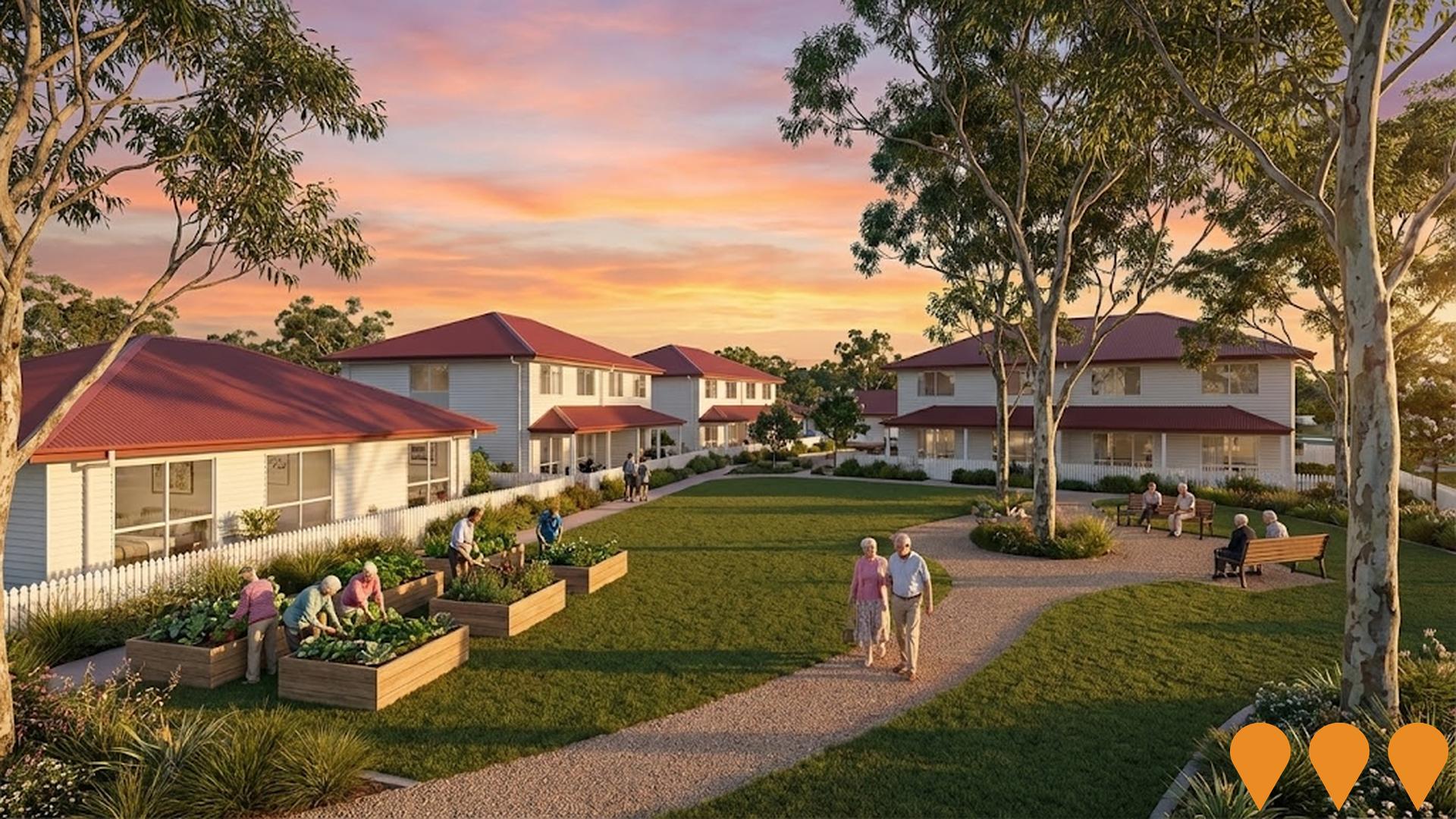
Employment
Employment conditions in Orange - North demonstrate exceptional strength compared to most Australian markets
Orange North has a skilled workforce with an unemployment rate of 1.6% as of June 2025. It has 13,519 residents in work, which is 2.1% below the Rest of NSW's rate of 3.7%.
Workforce participation is high at 67.5%, compared to Rest of NSW's 56.4%. Key industries include health care & social assistance, education & training, and retail trade. The area specialises in mining employment, with a share 2.8 times the regional level, while agriculture, forestry & fishing employs only 1.7% of local workers, below Rest of NSW's 5.3%. Over the year to June 2025, labour force levels decreased by 2.2%, and employment declined by 2.8%, leading to a rise in unemployment rate by 0.7 percentage points.
In contrast, Rest of NSW recorded an employment decline of 0.1% with unemployment rising by 0.4 percentage points. Jobs and Skills Australia forecasts national employment growth of 6.6% over five years and 13.9% over ten years. Applying these projections to Orange North's employment mix suggests local growth of approximately 6.5% over five years and 13.9% over ten years, based on a simple weighting extrapolation for illustrative purposes.
Frequently Asked Questions - Employment
Income
Income metrics indicate excellent economic conditions, with the area achieving higher performance than 75% of national locations assessed by AreaSearch
Income data from AreaSearch for financial year 2022 shows Orange - North has high incomes. The median income is $61,322 and the average is $76,986. In contrast, Rest of NSW's median income is $49,459 with an average of $62,998. Based on a 12.61% Wage Price Index growth since financial year 2022, estimated incomes as of September 2025 are approximately $69,055 (median) and $86,694 (average). Census 2021 data indicates that Orange - North's household, family, and personal incomes cluster around the 68th percentile nationally. Income distribution shows that 35.3% of residents (8,459 people) fall into the $1,500 - 2,999 bracket, aligning with the surrounding region at 29.9%. After housing costs, 86.0% of income remains for other expenses. The area's SEIFA income ranking places it in the 6th decile.
Frequently Asked Questions - Income
Housing
Orange - North is characterized by a predominantly suburban housing profile, with a higher proportion of rental properties than the broader region
The dwelling structure in Orange - North, as per the latest Census, consisted of 90.4% houses and 9.6% other dwellings (semi-detached, apartments, 'other' dwellings). In comparison, Non-Metro NSW had 88.7% houses and 11.4% other dwellings. Home ownership in Orange - North was at 29.1%, with the remaining dwellings either mortgaged (40.3%) or rented (30.7%). The median monthly mortgage repayment in the area was $1,777, higher than Non-Metro NSW's average of $1,700. The median weekly rent figure was recorded at $375, compared to Non-Metro NSW's $315. Nationally, Orange - North's mortgage repayments were lower than the Australian average of $1,863, while rents were comparable at $375.
Frequently Asked Questions - Housing
Household Composition
Orange - North has a typical household mix, with a higher-than-average median household size
Family households comprise 74.6% of all households, including 35.1% couples with children, 26.9% couples without children, and 11.7% single parent families. Non-family households account for the remaining 25.4%, with lone person households at 22.4% and group households making up 3.0%. The median household size is 2.7 people, larger than the Rest of NSW average of 2.5.
Frequently Asked Questions - Households
Local Schools & Education
Educational attainment in Orange - North aligns closely with national averages, showing typical qualification patterns and performance metrics
Orange has a regional benchmark for educational qualifications with 25.3% of residents aged 15+ holding university degrees compared to NSW's 32.2%. This indicates potential for educational development. Bachelor degrees are the most common at 17.4%, followed by postgraduate qualifications (5.2%) and graduate diplomas (2.7%). Vocational credentials are also prominent, with 38.6% of residents aged 15+ holding them, including advanced diplomas (10.6%) and certificates (28.0%).
Educational participation is high at 32.9%, with 12.5% in primary education, 8.7% in secondary education, and 4.2% pursuing tertiary education. Orange - North's three schools have a combined enrollment of 1,323 students. The area has typical Australian school conditions (ICSEA: 1000) with balanced educational opportunities, including one primary school and two K-12 schools. However, limited local school capacity (5.5 places per 100 residents vs 16.9 regionally) means many families travel to nearby areas for schooling.
Frequently Asked Questions - Education
Schools Detail
Nearby Services & Amenities
Transport
Transport servicing is moderate compared to other areas nationally based on assessment of service frequency, route connectivity and accessibility
Orange-North has 428 active public transport stops, all of which are bus stops. These stops are served by 66 different routes that together facilitate 1,174 weekly passenger trips. The average distance from a resident's location to the nearest transport stop is 136 meters.
On average, there are 167 trips per day across all routes, equating to approximately two trips per week for each individual stop.
Frequently Asked Questions - Transport
Transport Stops Detail
Health
Orange - North's residents are relatively healthy in comparison to broader Australia with common health conditions slightly more prevalent than average across both younger and older age cohorts
Orange - North's health metrics are close to national benchmarks. Common health conditions are slightly more prevalent than average across both younger and older age cohorts.
The rate of private health cover is exceptionally high at approximately 58% of the total population (13,851 people), compared to 53.9% across Rest of NSW. The most common medical conditions in the area are mental health issues and asthma, impacting 9.9 and 9.1% of residents respectively. 67.9% of residents declare themselves completely clear of medical ailments, compared to 65.4% across Rest of NSW. The area has 14.6% of residents aged 65 and over (3,491 people), which is lower than the 18.7% in Rest of NSW. This is broadly in line with the general population's health profile.
Frequently Asked Questions - Health
Cultural Diversity
Orange - North ranks below the Australian average when compared to other local markets across a number of language and cultural background related metrics
Orange North, found to have below average cultural diversity, had 88.2% of its population born in Australia, with 90.7% being citizens and 91.2% speaking English only at home. Christianity was the main religion, comprising 62.5%, compared to 63.1% across Rest of NSW. The top three ancestry groups were Australian (30.6%), English (29.6%), and Irish (8.8%).
Notably, Australian Aboriginal representation was higher at 5.3% in Orange North versus the regional average of 4.9%. Russian representation was also higher at 0.3%, compared to 0.2%, and New Zealand representation was slightly higher at 0.6% versus 0.5%.
Frequently Asked Questions - Diversity
Age
Orange - North hosts a young demographic, positioning it in the bottom quartile nationwide
The median age in Orange - North is 34, which is considerably lower than the Rest of NSW figure of 43 and significantly lower than Australia's median age of 38 years. Compared to the Rest of NSW average, the 25-34 cohort is notably over-represented at 15.1% in Orange - North, while the 65-74 year-olds are under-represented at 7.8%. Between 2021 and present, the 25 to 34 age group has grown from 14.2% to 15.1% of the population. Conversely, the 5 to 14 cohort has declined from 16.1% to 14.7%. Demographic modeling suggests that Orange - North's age profile will evolve significantly by 2041. The 25 to 34 age cohort is projected to expand notably, increasing by 1,287 people (36%) from 3,613 to 4,901. Meanwhile, the 15 to 24 cohort is projected to grow modestly by 7% (212 people).


